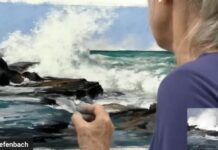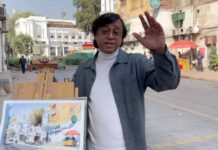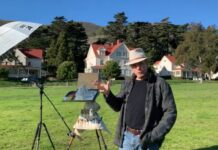A landscape painting demonstration from John Potoschnik, author of Unlimited Color with a Limited Palette.
“To Everything There’s a Season” are the words to a very popular song by Pete Seeger, based on Ecclesiastes 3:1-8, recorded in the late 1950s. It was made even more popular by the Byrds as “Turn, Turn, Turn” in 1965.
There is a time for everything and the creation of my recent painting, “Of the Land,” arrived at that time.
Years ago, before the invention of digital photography, there was slide and print film. I would typically use 4” x 6” prints as reference for paintings. I have file drawers full of them. Now with the advent of digital, those photos are pretty much ignored…until a “time for everything” arrived.
Casually going through my New Mexico photo file, I came across a print that caused me to pause and ponder. Of course, I’d seen the photo many times over the years, but as you’ve probably all experienced at some point, a photo you’ve looked at for years suddenly grabs you. That’s what happened to me. Maybe it’s because I’m older, am more experienced as a painter, and have more knowledge…or maybe it was simply an emotional thing. Despite the poor quality of the photo, I recognized a strong composition. I was also drawn to the red structure cut into the earth, hence the title, “Of the Land.”
Allow me to share with you how the painting was created:
Below is the resource photo used for the painting. I took a digital photo of the 4” x 6” print. When working from prints, I find an easy way to size them up is to create grid lines right on the photo. What you’re seeing here are those grid lines, as I was trying to decide what proportion to select for the final painting. The photo had to be manipulated in the computer somewhat in order to tell what was going on in the shadows.
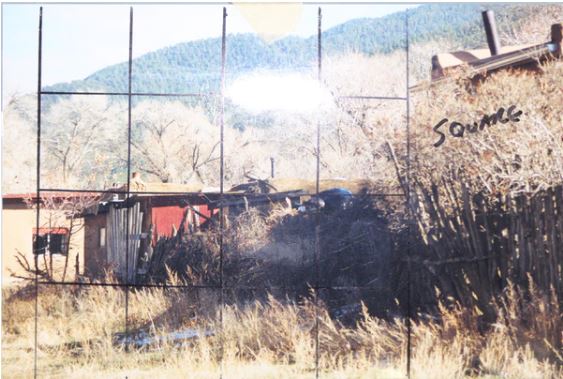
Several years ago I took a 5-day workshop with Joe Paquet. It took time to process and apply all the things I learned. One of the major takeaways was the way he blocks in a painting. Using a mixture of Cobalt Blue and Ivory Black, he blocks in all the shadows of the painting…using white where needed to adjust the value. Below, I am applying his teaching. The surface used for “Of the Land” is a 12” x 16” Jack Richeson Premium Gessoed Hardboard, 1/8” thick, toned with a mid-tone gray.
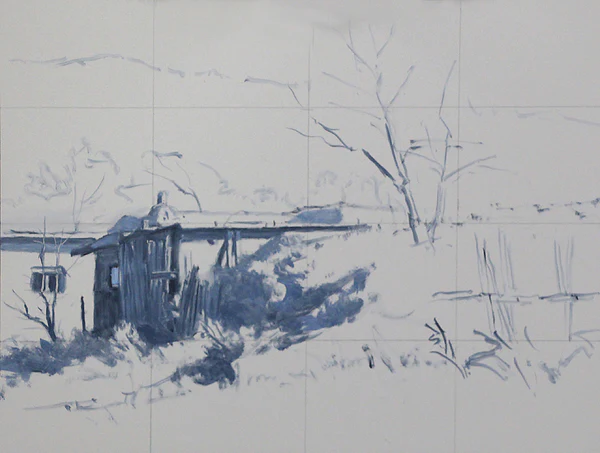
The Cobalt Blue and Ivory Black block-in of the shadows is complete. This stage is really the foundation of the painting and well describes how the completed piece will hold up. The beauty of working in this manner is that value patterns can be easily adjusted before moving forward into color.
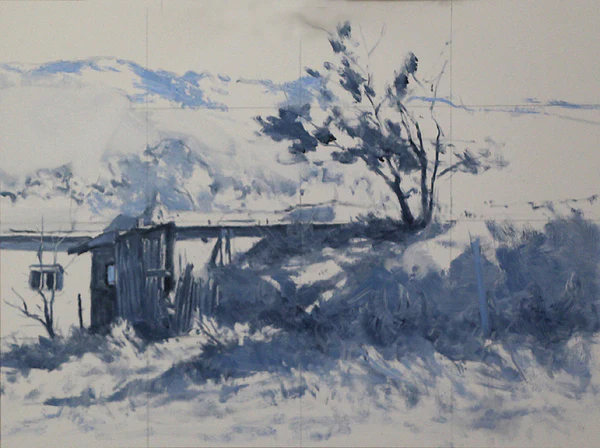
The palette for this painting was Ultramarine Blue, Cadmium Red, Burnt Siena, Yellow Ochre, and Titanium White. It’s basically a 3-primary palette…one blue, two reds, and a yellow. Many of you know I use a very limited palette and have for 35 years. I love the challenge of it and the color harmony that comes almost automatically. A limited palette forces one to intermix all the colors on the palette, thereby creating relationships, working together in harmony. If you would like to know more about my theories, I urge you to order my recently released book and video, mentioned at the end of this article.
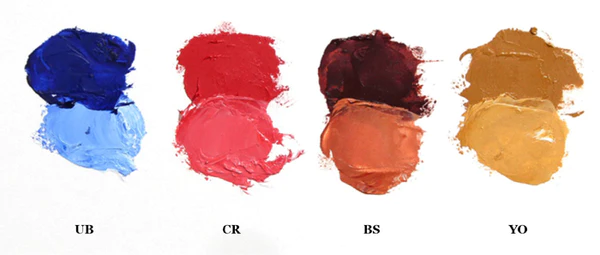
Beginning with the focal point, application of color begins. Care is take to match the values that have been established in the block-in of the shadows. Appropriate color and value are then applied to the areas in the light.
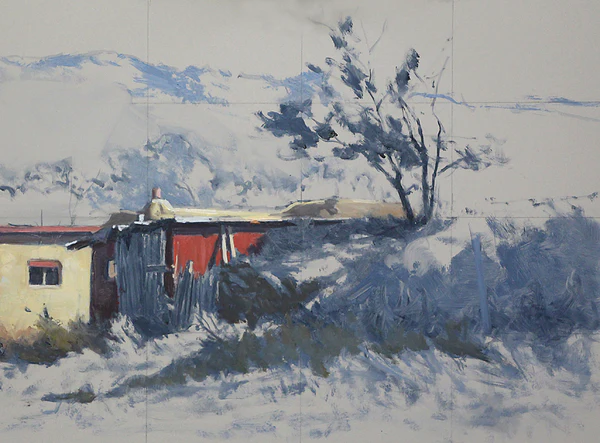
Application of color is pretty well advanced at this point. You won’t see the struggle I had with the foreground…five attempts, five wipe outs before arriving at something I was happy with.
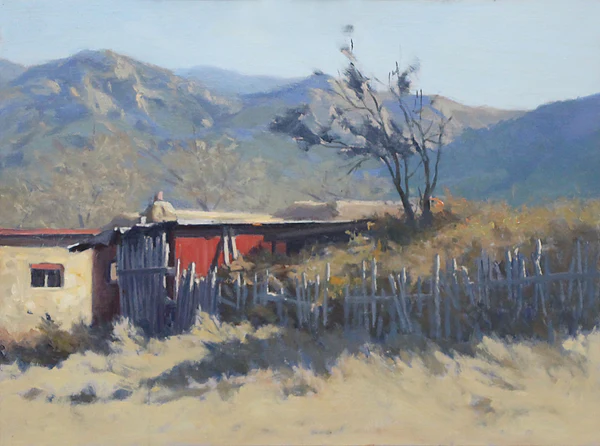
It’s a really good idea to check your work by removing all the color. This step clearly shows the importance of accurate values in achieving the desired mood. Also, it’s still possible to make some adjustments, but much more difficult than if they had been made earlier.
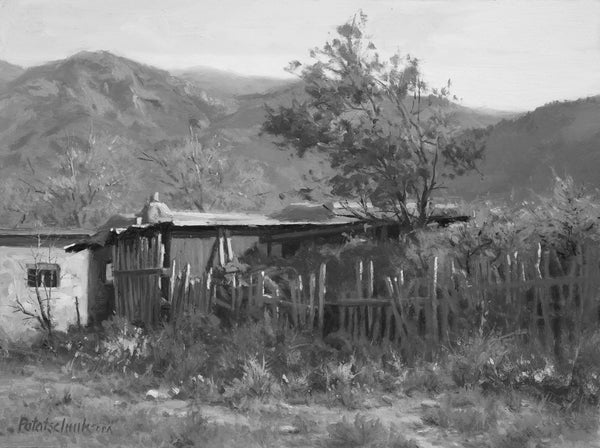
There is a noticeable difference between the step-by-step images and this final one (shown below). The process images were shot in the studio, this image was photographed professionally. In any case, I hope you have found the process informative and helpful.
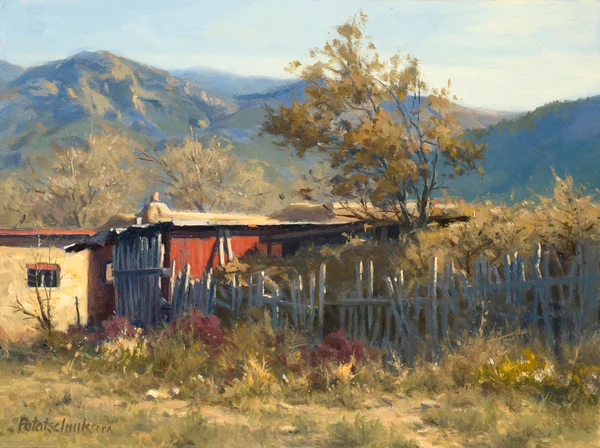
Learn more with John Pototschnik’s expert guidance in the following art resources (click here):
- NEW! Painting Values and Color
- Unlimited Color with a Limited Palette (book and video)
- Limited Palette Landscapes
- Start painting your landscape masterpiece
And browse more free articles here on plein air and landscape painting at OutdoorPainter.com

